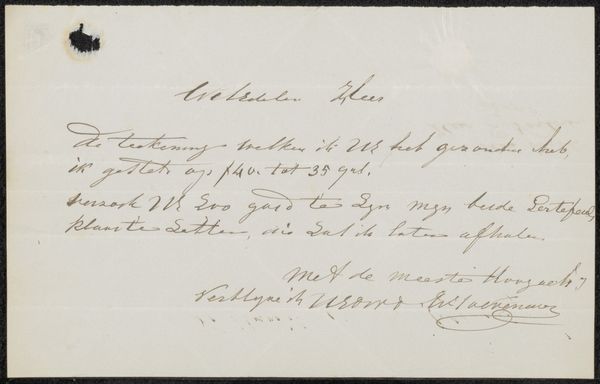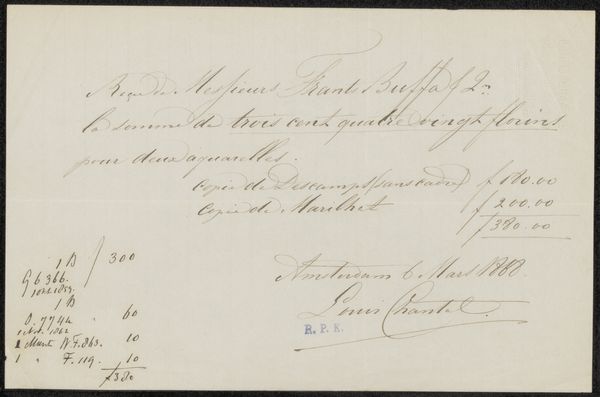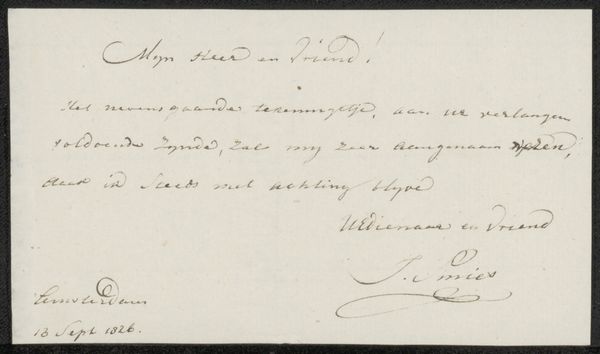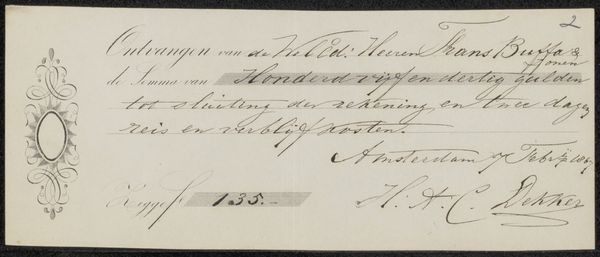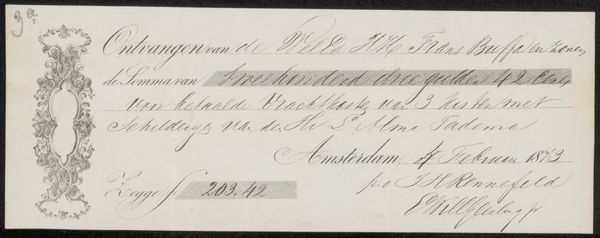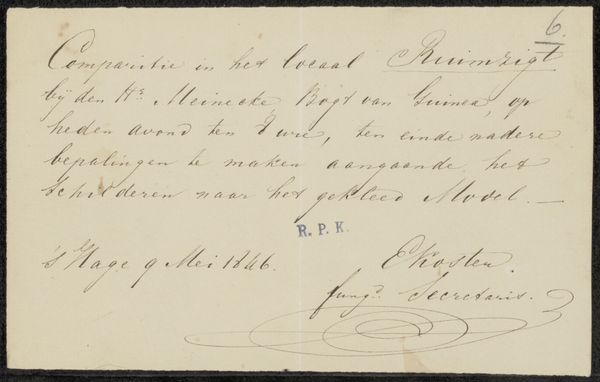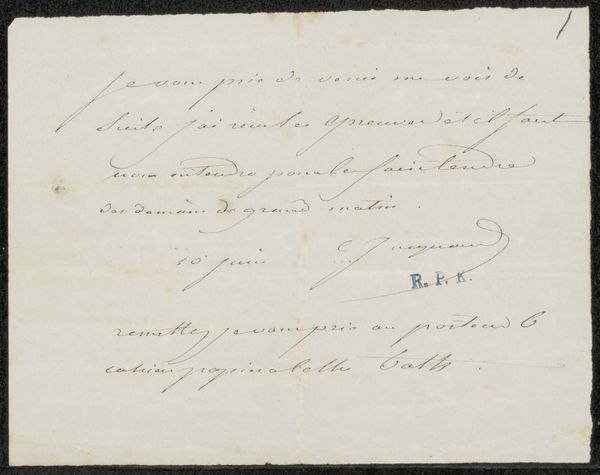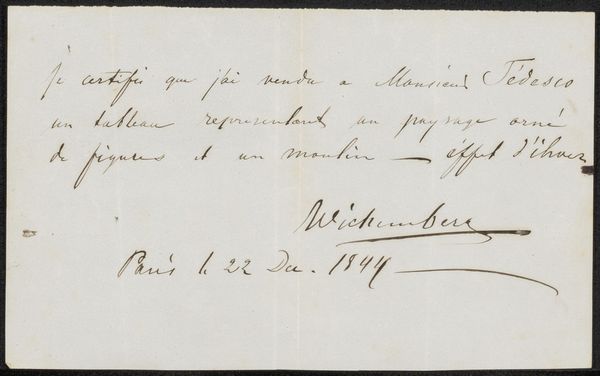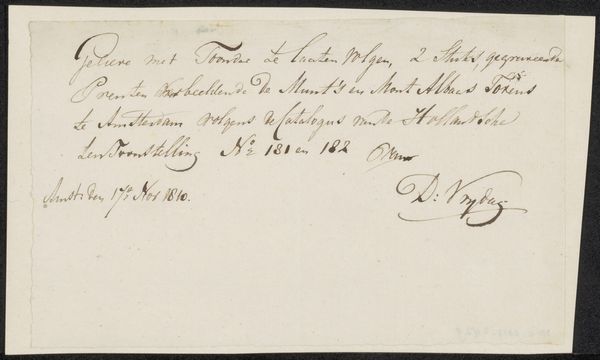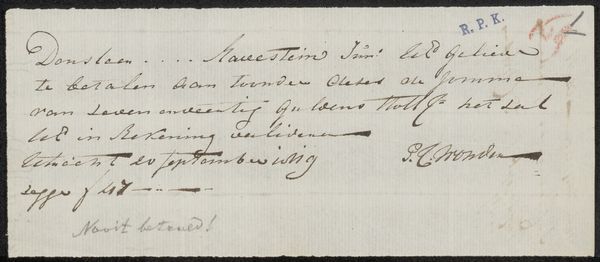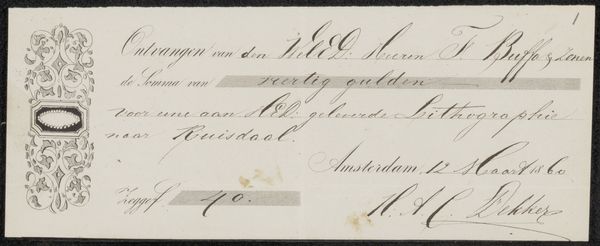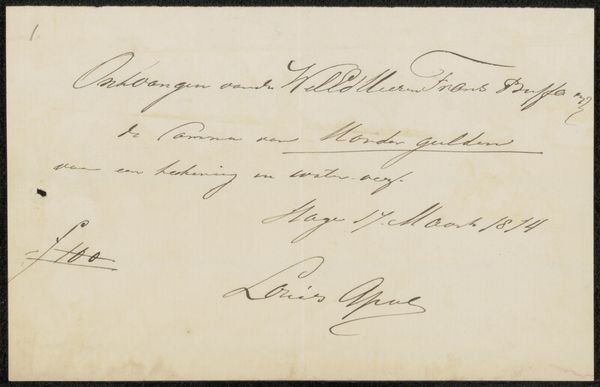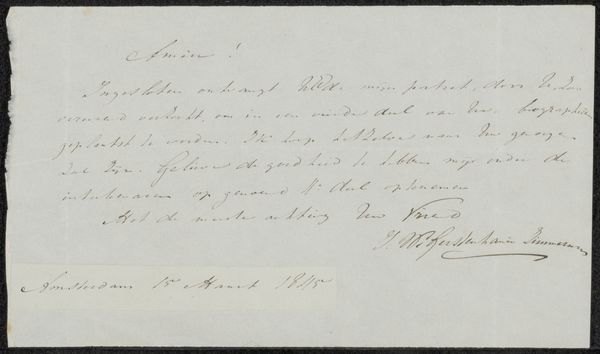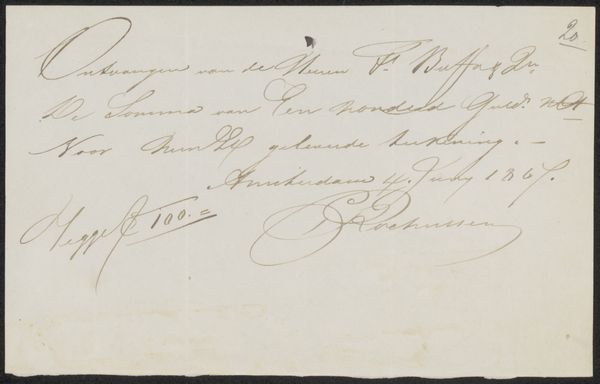
drawing, paper, ink
#
drawing
#
paper
#
ink
#
geometric
#
calligraphy
Copyright: Rijks Museum: Open Domain
This is a receipt made in Amsterdam, dated 1863, by Frans Buffa en Zonen. It confirms payment from Pieter Harmen Witkamp. But a receipt is more than just a record of a transaction; it’s a cultural artifact that speaks volumes about the social and economic structures of its time. Consider the elaborate script and decorative border. These visual elements suggest a society that valued aesthetics even in the most mundane of transactions. In the 19th century Netherlands, handwriting was not just a means of communication but a reflection of one’s education and social standing. The inclusion of ornate details reflects the cultural norms of that time. Historians use sources like these to reconstruct the everyday lives of people in the past. By studying receipts, account books, and other ephemera, we can gain insight into economic practices, social hierarchies, and the cultural values of a particular time and place.
Comments
No comments
Be the first to comment and join the conversation on the ultimate creative platform.
